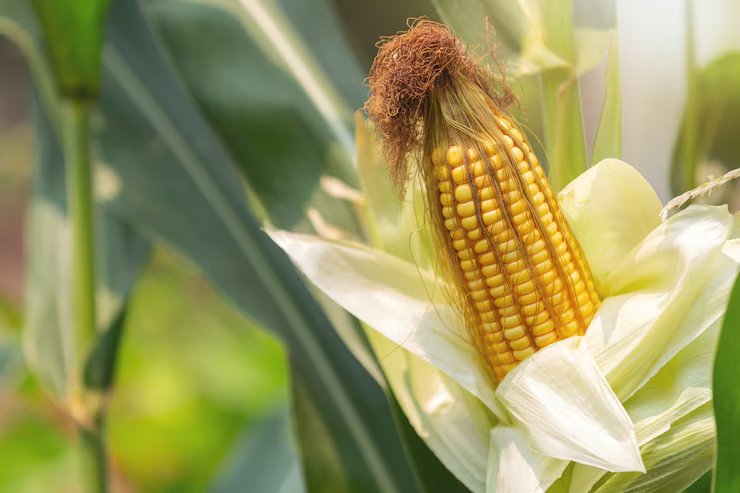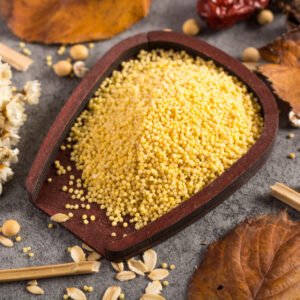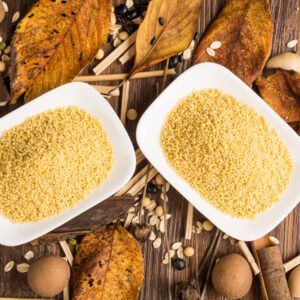India’s agricultural landscape showcases remarkable diversity, with maize standing out as a vital cereal crop that supports food security and drives economic growth. As a leading maize starch manufacturer, supplier & exporter in India, CMS Industries understands the importance of maize varieties for farmers, distributors, and agribusinesses nationwide. This comprehensive guide delves into the wide range of maize varieties grown across India, highlighting their unique characteristics and their role in promoting sustainable agricultural practices.
Introduction: India’s Maize Revolution
Maize, scientifically known as Zea mays, stands as India’s third-largest cereal crop after rice and wheat. The country’s diverse climatic conditions and soil types create an ideal environment for cultivating various maize varieties, making India one of the world’s leading maize producers. From the fertile plains of Punjab to the coastal regions of Karnataka, different maize varieties thrive across India’s agricultural zones.
The significance of maize extends beyond traditional food consumption. Modern agricultural practices have transformed maize into a versatile crop serving multiple industries, including animal feed production, food processing, and industrial applications. Understanding the varieties of maize available in India becomes crucial for maximizing agricultural productivity and meeting diverse market demands.
Classification of Maize Varieties in India
Based on Kernel Characteristics
Dent Maize Varieties Dent maize represents the most widely cultivated type in India, characterized by a distinctive dent or depression at the crown of each kernel. These varieties are predominantly used for animal feed and industrial purposes due to their high starch content and excellent storage properties.
Flint Maize Varieties
Flint maize varieties feature hard, smooth kernels with minimal moisture content, making them ideal for long-term storage and export. These varieties demonstrate superior resistance to pest attacks and harsh weather conditions, making them popular among Indian farmers.
Sweet Maize Varieties Sweet maize varieties contain higher sugar content and are primarily consumed as fresh vegetables. These varieties have gained popularity in urban markets and among health-conscious consumers seeking nutritious food options.
Popcorn Varieties Specialized popcorn varieties cultivate small, hard kernels that expand significantly when heated. These varieties serve the growing snack food industry and represent niche agricultural opportunities for Indian farmers.
Based on Maturity Duration
Early Maturing Varieties (75-90 days) Early maturing maize varieties provide quick returns on investment and allow farmers to practice multiple cropping systems. These varieties prove particularly beneficial in regions with shorter growing seasons or irregular rainfall patterns.
Medium Maturing Varieties (90-110 days) Medium maturing varieties offer balanced yield potential and adaptability across diverse climatic conditions. These varieties represent the backbone of India’s maize production, providing consistent yields for farmers.
Late Maturing Varieties (110-130 days) Late maturing varieties typically produce higher yields but require longer growing seasons and consistent moisture availability. These varieties suit regions with extended growing periods and reliable irrigation facilities.
Popular Maize Varieties Across Indian States
North Indian Varieties
Punjab and Haryana The northwestern states of Punjab and Haryana cultivate high-yielding hybrid varieties such as HQPM-1, HQPM-4, and HQPM-5. These Quality Protein Maize (QPM) varieties provide enhanced nutritional value and support the region’s intensive agricultural practices.
Uttar Pradesh Uttar Pradesh, India’s leading agricultural state, grows diverse maize varieties including Ganga-5, Ganga-11, and various hybrid varieties. The state’s extensive irrigation network supports both kharif and rabi season maize cultivation.
Central Indian Varieties
Madhya Pradesh Madhya Pradesh leads India in maize production, cultivating varieties such as JM-216, Shaktiman-1, and Shaktiman-2. The state’s favorable agro-climatic conditions support year-round maize cultivation with excellent yield potential.
Maharashtra Maharashtra farmers prefer drought-tolerant varieties such as African Tall, Ganga Safed-2, and various composite varieties that withstand the state’s semi-arid conditions.
Eastern Indian Varieties
West Bengal West Bengal cultivates maize varieties suited to high humidity and monsoon conditions, including Vivek Makai-9, Vivek Makai-12, and regional composite varieties.
Bihar
Bihar focuses on early-maturing varieties that fit between rice crops, including Suwan, Kanchan, and Shweta varieties that adapt well to the state’s cropping patterns.
Southern Indian Varieties
Karnataka Karnataka grows diverse maize varieties including NAC-6002, Arjun, and Deccan-103, suitable for both irrigated and rainfed conditions across different agro-climatic zones.
Andhra Pradesh and Telangana These states cultivate high-yielding hybrids such as COFH-3, COFH-4, and various private sector hybrids that deliver excellent performance under intensive management.
Read More – What Is the Classification of Maize
Hybrid Maize Revolution in India
Single Cross Hybrids
Single cross hybrids represent the pinnacle of maize breeding technology, offering superior uniformity, high yield potential, and predictable performance. These varieties command premium prices but require higher input investments.
Three-Way Cross Hybrids
Three-way cross hybrids provide balanced performance with moderate input requirements, making them suitable for diverse farming conditions across India.
Double Cross Hybrids
Double cross hybrids offer stability and adaptability across varying environmental conditions, though they may not achieve the peak yields of single cross varieties.
Quality Protein Maize (QPM) Varieties
Quality Protein Maize represents a significant breakthrough in nutritional enhancement of maize. These varieties contain higher levels of lysine and tryptophan, essential amino acids often lacking in conventional maize. Indian agricultural research institutions have developed several QPM varieties including:
- HQPM-1: Suitable for northern Indian conditions with good yield potential
- HQPM-4: Adapted to diverse agro-climatic conditions with excellent protein quality
- HQPM-5: Latest release with improved yield and nutritional characteristics
- Vivek QPM-9: Developed for eastern Indian conditions with good disease resistance
QPM varieties address malnutrition concerns while maintaining agricultural productivity, representing sustainable solutions for food security challenges.
Specialty Maize Varieties
Baby Corn Varieties
Baby corn cultivation has emerged as a profitable venture for Indian farmers, particularly in states like Karnataka, Maharashtra, and Uttar Pradesh. Varieties such as VL-42 and HM-4 produce tender young cobs harvested before kernel formation.
High Oil Content Varieties
Varieties with elevated oil content serve industrial applications and premium animal feed markets. These specialized varieties command higher prices and represent value-addition opportunities for farmers.
High Starch Varieties
Industrial applications drive demand for high-starch maize varieties used in starch production, glucose manufacturing, and other food processing industries.
Maize is classified into various types based on kernel texture and use, including dent, flint, sweet, popcorn, and waxy maize.
Regional Adaptations and Climate Considerations
Drought-Tolerant Varieties
Climate change challenges have increased focus on drought-tolerant maize varieties. Research institutions have developed varieties such as Pusa Vivek QPM-9 and regional composites that maintain productivity under water stress conditions.
Heat-Tolerant Varieties
Rising temperatures across India necessitate heat-tolerant varieties that maintain kernel development and yield potential under thermal stress. Summer cultivation particularly benefits from these specialized varieties.
Disease-Resistant Varieties
Indian maize varieties incorporate resistance to major diseases including turcicum leaf blight, maydis leaf blight, and ear rot diseases. This genetic resistance reduces pesticide requirements and supports sustainable agricultural practices.
Economic Impact and Market Considerations
Export Potential
India’s maize varieties cater to international markets, with specific varieties meeting export quality standards for countries in Southeast Asia, the Middle East, and Africa. Understanding global market preferences helps farmers select appropriate varieties for export opportunities.
Value Chain Integration
Different maize varieties serve distinct segments of the agricultural value chain. Feed grade varieties support India’s growing livestock industry, while food grade varieties serve human consumption and processing industries.
Price Premiums
Specialty varieties such as QPM, organic maize, and certified seed production command premium prices, providing enhanced income opportunities for progressive farmers.
Future Prospects and Emerging Varieties
Biofortified Varieties
Ongoing research focuses on developing biofortified maize varieties with enhanced micronutrient content, addressing nutritional deficiencies prevalent in Indian populations.
Climate-Smart Varieties
Future maize varieties will incorporate traits for climate resilience, including tolerance to extreme weather events, efficient water use, and carbon sequestration capabilities.
Precision Agriculture Integration
Advanced varieties designed for precision agriculture systems will optimize input use efficiency and maximize yield potential through technological integration.
Best Practices for Variety Selection
Soil Testing and Analysis
Successful maize cultivation begins with comprehensive soil testing to determine nutrient availability and pH levels. Different varieties perform optimally under specific soil conditions.
Climate Assessment
Understanding local climate patterns, rainfall distribution, and temperature ranges helps farmers select varieties most suited to their environmental conditions.
Market Analysis
Evaluating local and regional market demands ensures farmers choose varieties that align with buyer preferences and price structures.
Input Availability
Considering availability of seeds, fertilizers, and agricultural inputs influences variety selection decisions for sustainable crop management.
Conclusion
India’s diverse maize varieties represent centuries of agricultural evolution and modern breeding achievements. From traditional composite varieties to cutting-edge hybrids, the country’s maize genetic resources support food security, economic growth, and sustainable agricultural development. As agricultural practices continue evolving, understanding and utilizing appropriate maize varieties becomes increasingly critical for farmers, agribusinesses, and the broader agricultural sector.
CMS Industries remains committed to supporting India’s agricultural community through the supply of premium agricultural products and expertise. Our comprehensive understanding of crop varieties and agricultural practices enables farmers to make informed decisions that maximize productivity and profitability. The future of Indian agriculture depends on continued innovation in crop varieties and sustainable farming practices that preserve our agricultural heritage while meeting modern challenges.
Through strategic variety selection, appropriate agronomic practices, and market-oriented production, Indian farmers can harness the full potential of maize cultivation. The diversity of maize varieties available in India provides opportunities for every farmer, regardless of their farming conditions or market objectives, to participate in the country’s agricultural success story.
Frequently Asked Questions (FAQs)
Q1: What are the main types of maize varieties grown in India?
India grows four main types of maize varieties: dent maize (most common for animal feed), flint maize (excellent storage properties), sweet maize (fresh consumption), and popcorn varieties for snack food industry applications across different states.
Q2: Which Indian states are the largest producers of maize?
Madhya Pradesh leads maize production in India, followed by Karnataka, Maharashtra, Bihar, and Uttar Pradesh. These states benefit from favorable climate conditions, irrigation facilities, and adoption of high-yielding hybrid varieties for maximum productivity.
Q3: What are Quality Protein Maize (QPM) varieties and their benefits?
QPM varieties contain higher levels of essential amino acids lysine and tryptophan compared to conventional maize. Popular varieties include HQPM-1, HQPM-4, and HQPM-5, offering improved nutritional value for addressing malnutrition while maintaining good agricultural yields.
Q4: How do farmers choose the right maize variety for their region?
Farmers should consider local climate conditions, soil type, water availability, maturity duration requirements, market demand, and input costs. Consulting agricultural experts and conducting soil tests helps determine the most suitable variety for optimal performance.
Q5: What is the difference between hybrid and composite maize varieties?
Hybrid varieties offer higher yields, uniformity, and disease resistance but require purchasing fresh seeds annually. Composite varieties provide stable performance, allow seed saving for next season, and cost less but generally yield lower than hybrids.





